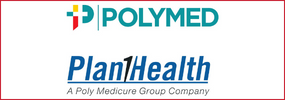Industry Symposia
The 8th WoCoVA industry symposia. The program is the responsibility of the presenting company and has no relationship with WoCoVA.
Wednesday 17 April 2024
11:15 – 12:00
Forum Hall
New frontiers of femoral access: from ‘groin port’ to ‘FICC-port’
The evolution of femoral access in the last five years – Mauro Pittiruti
Indications for FICC-port – Fulvio Pinelli
Venous anatomy of the lower limb and possible access sites – Fabrizio Brescia
Insertion technique of FICC ports – Maria Giuseppina Annetta
The Plan 1 Health symposium aims to analyze the most recent surgical technique options relating to the implant of vascular access via the femoral route. It will analyze and disclose the most recent clinical aspects related to the implant site, vascular access methods and techniques, and the use of US support for a safe vascular access and the correct catheter tip positioning. The new clinical perspectives of femoral access for fully implantable long-term devices such as FICC and PICC-port will be discussed.

11:15 – 12:00
South Hall
Peripheral Intravenous Catheters: A global glance
Peripheral intravenous catheters: A global glance – Stephanie Pitts
& Sandra Dvorakova
Peripheral intravenous catheter insertion and care varies significantly around the world. Yet the goal of infusing intravenous fluids, medications, nutrition, blood products is the same. Variation in care stems from various local standards of care, culture of care, staffing models/responsibilities and variation in product availability globally. During this session we will explore different continents as it relates to PIVC insertion and care identifying similarities and differences. This collaborative session will allow us to begin to explore how we work towards a foundation of global PIVC consensus in care.

11:15 – 12:00
Terrace 2A
Vascular access excellence, wherever the patient is: Strategies for improving patient care & reducing costs with outside hospital care
Chair: Stephen Church,
A reflection on the challenges and benefits of an OPAT service in Swansea Bay Health Board – Frankie Thompson
Humanization of care, a new era. Home-Vascular Access Service – Monica Pinto
Healthcare provision is currently undergoing significant transformation due to several factors, including an aging population, rising prevalence of chronic diseases, resource constraints, and financial pressures. Governments and healthcare organizations are actively exploring new models for delivering care. One key focus area is shifting healthcare provision outside the traditional hospital-based acute care setting.
This symposium will spotlight two innovative approaches to healthcare delivery that leverage the expertise of hospital infusion: Outpatient Antimicrobial Therapy (OPAT): Initially implemented in the UK, OPAT is now gaining broader adoption across Europe, including examples in Switzerland and Germany. By allowing patients to receive antimicrobial treatment without the need to stay in hospital, OPAT improves patient outcomes and reduces strain on hospital resources.
Secondly, Supporting Patient Carers: Involves empowering patient caregivers to play a more active role in care, maintenance, and monitoring of the patient’s vascular access. Supporting them through technology to provide remote assistance for effective communication with the hospital team. By enabling patients to be managed at home, this approach enhances patient well-being, frees up hospital capacity, and contributes to overall cost savings in the healthcare system.
These innovations represent a positive shift toward patient-centred care and more efficient resource utilization.
OBJECTIVES:
1. To understand that vascular access plays an important role in managing patient care outside of the normal acute care hospital environment, which has advantages for the patient and the healthcare system.
2. How vascular access can be used in an outpatient setting to effectively delivery antimicrobial therapy.
3. How technology can help to empower, enable, and support care givers to provide vascular access management in the home.

Thursday 18 April 2024
11:25 – 12:10
Forum Hall
Strategies for the Prevention of CLABSI: Focus on Promotion of Dressing Integrity and Longevity©
Strategies for the prevention of CLABSI: Focus on promotion of dressing integrity and longevity – MiKaela M. Olsen
Learning Objectives:
• Explain evidence-based central venous catheter dressing change recommendations.
• Discuss strategies for achieving zero tolerance for blood at the insertion site.
• Outline strategies to ensure catheter dressing longevity in challenging situations.

11:25 – 12:10
South Hall
Unlocking new horizons to elevate patient care and safety
Chairs: Richard Leech, Matt Ostroff
Midline, safe, and cost-effective VAD for mid-term peripheral infusion therapy –
Hervé Rosay & Julian Phelps
Optimizing care access with PICC-Port in oncology – Aldwin Del Mundo
Midline : Safe and Cost-effective VAD from Mid-term peripheral Infusion Therapy.
Discover the economic benefits of Mini-midline and Midline catheters compared to Short Peripheral Catheters (SPC). Our medico-eco study unveils the cost-effectiveness of Mini-midline and Midline based on complication rates, paving the way for more efficient and affordable patient care.
From cost-effectiveness to practical application, dive into the results of a comprehensive clinical practice audit involving 1045 patients that demonstrate the safe and reliable use of midline catheters. Learn how the introduction of mid clavicular tip placement leads to patient safety and care reliability in the choice of midline catheters for extended dwell times.
Optimizing Care Access with PICC-Port in Oncology
Discover the Picc-port service at St Georges, the second major institution in England to implement Nurse-led PICC port insertion. Explore the motivations behind launching the PICC port service, the establishment process, and the methods employed for ongoing service monitoring. An assessment of the PICC Port service’s efficiency has been conducted through a retrospective analysis of clinical data from patients who underwent PICC port insertion within this service. During the session, uncover a comprehensive and holistic approach, grounded in various parameters, aimed at showcasing positive outcomes for both patients and the hospital.

11:25 – 12:10
Terrace 2A
Advances in Vascular Assess Technology: How technology can help you to improve patient care & experience
Chair: Servane Pelle
Strategies for preventing catheter related thrombosis in 2024 – Mauro Pittiruti
How strong collaboration between healthcare professionals and product development teams improves patient care & experience – Shayne Messerly
BRIEF OVERVIEW:
Catheter-related thrombosis in vascular access is frequently encountered, yet the precise causes remain somewhat elusive due to the number of factors that may influence it. Catheter-related thrombosis often leads to premature catheter removal. Our first speaker will delve into the key factors contributing to these events, specifically how device choice and the insertion technique are crucial factors in minimising catheter-related thrombosis. Practical guidance on avoiding such complications will be provided.
Prizing winning author & futurist Arthur C. Clarke once wrote “The only way to discover the limits of possible is to go beyond them into the impossible”. ALL true innovation in the medical field, especially those in vascular access, have been a result of healthcare professionals working hand in hand with commercial product development teams. Our second speaker will present a case for even stronger collaboration and how open-mindedness to the “impossible” will improve patient care & experience. Past, present, and future innovations will be presented with the goal of driving excitement & energy around improved collaboration.
OBJECTIVES:
1. To understand the importance of the choice of the device in the prevention of catheter-related thrombosis
2. To understand the importance of the insertion technique in the prevention of catheter-related thrombosis
3. Showcase how open-mindedness to the impossible has changed the world
4. Drive energy and excitement around improved collaboration between healthcare professionals and commercial product development teams to improve patient care & experience

16:00 – 16:45
Forum Hall
Pain is not an option: Changing how to monitor IVs for extravasations
Pain is not an option: Changing how to monitor IVs for extravasations – Andrew Barton & Gary Warren
Andrew Barton led the development of the just launched National Infusion and Vascular Access Society (NIVAS) UK Extravasation Toolkit, which is designed to highlight the risks of extravasations and infiltrations and facilitate healthcare organizations’ ability to improve patient safety and experience when it comes to IVs.
The session will provide an overview of the new Toolkit and how other organizations can use it as a template for developing their own. It will also provide an overview of vascular access and IV therapy, the complications and injuries that can arise from extravasations and their significant cost to healthcare organizations. The importance of selecting the right IV access device depending on the treatment and ways to prevent IV harm will also be discussed.
Gary Warren will then discuss the importance of early detection and continuous patient monitoring in IV therapy and provide an overview of the ivWatch IV sensor technology.
With his own hospital unit struggling with multiple extravasations a week, Barton led a study at Frimley Health NHS Foundation evaluating the IV infiltration and extravasation detection technology and will publicly share for the first time the results of the study. To date, the technology has prevented scores of potentially serious vesicant extravasation injuries, reducing the injury rate by 100% and increasing the accuracy of vascular injury diagnosis overall.

16:00 – 16:45
South Hall
The impact of colonization and infection on vascular devices
The impact of colonization and infection on vascular devices – Amy Bardin & Victor Rosenthal
At Teleflex, our mission is to eliminate vascular related complications and save lives. Infection reduction and colonization reduction are often discussed in conjunction with one another. How often is there a focus on reducing colonization, whether it be an area on the body, or on the surface of a medical device? Does the ability to reduce colonization have the potential to improve patient outcomes? This session will explore risk reduction as it pertains to colonization reduction in an engaging and illuminating lecture.

16:00 – 16:45
Terrace 2A
Evidence-based needleless connector choice: adding to the CRBSI prevention bundle
Evidence-based needleless connector choice: adding to the CRBSI prevention bundle – Marcia Ryder
Dr. Marcia Ryder, PhD, MS, RN, FNAP examines how the dramatic rise of catheter-related bloodstream infection (CRBSI) over the pandemic years has led clinicians to reconsider the impact of the choice of needleless connector (NC) on CRBSI risk. The research demonstrating the influence of NC design on intraluminal biofilm formation will be described. New research identifying a specific design technology that significantly reduces the risk of catheter-associated bloodstream infection and mortality at considerable cost savings will be presented.
Objectives:
At the end of this session, you will be able to:
1. Identify critical needleless design features that minimize biofilm formation and bacterial transfer.
2. Understand the importance of needleless connector design features and their impact on the risk of CRBSI, mortality, and cost.
3. Re-evaluate needleless connector choice in your healthcare setting.

Friday 19 April 2024
11:25 – 12:10
Forum Hall
Change in Central Venous Catheter (CVC) tip navigation in China
Introduction: Development in CVC tip positioning – Ton van Boxtel
The need for ECG guided tip navigation and tip confirmation – Weiyi Zhu
Malposition of PICC into middle thyroid and thymic vein: a case series – Xiaoxia Zhang
PICC navigation & ECG tip confirmation – Andrew Barton
The need for ECG guided tip navigation and tip confirmation – Prof. Zhu Weiyi
Summary: This comprehensive presentation outlines key initiatives related to infusion therapy quality, including standardized assessment criteria, specialized training for new nurses, leveraging technology, establishing dedicated teams, and sharing expertise beyond Ruijin Hospital.
Learning Objective: Upon completion of this overview, learners will be equipped to implement effective infusion therapy practices, enhance patient care, and contribute to interdisciplinary collaboration in healthcare settings.
Malposition of PICC into middel thyroid an thymic vein: a case series – Prof. Zhang Xiaoxia


